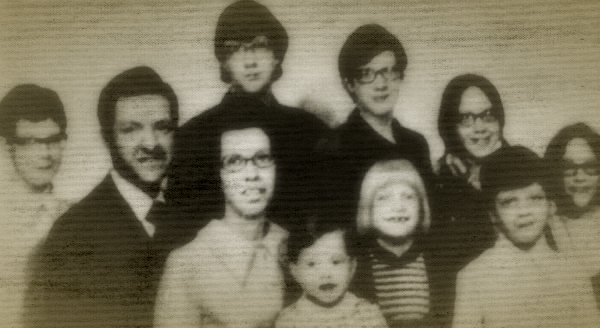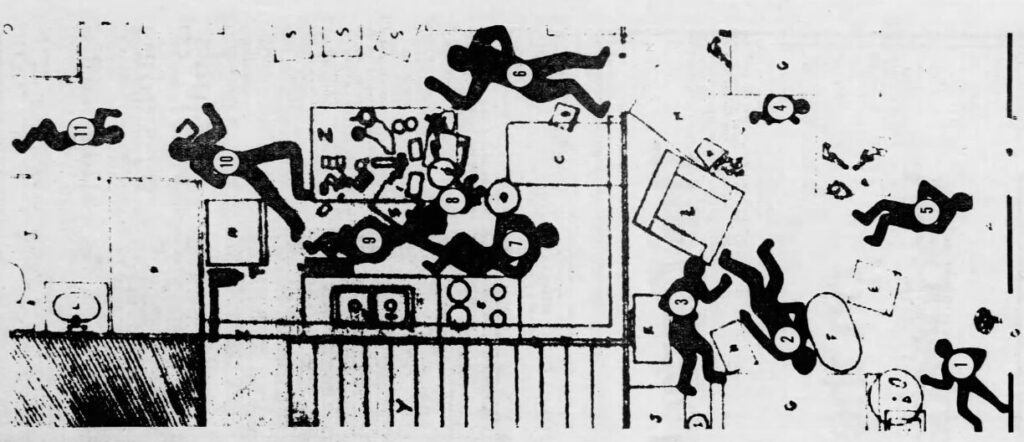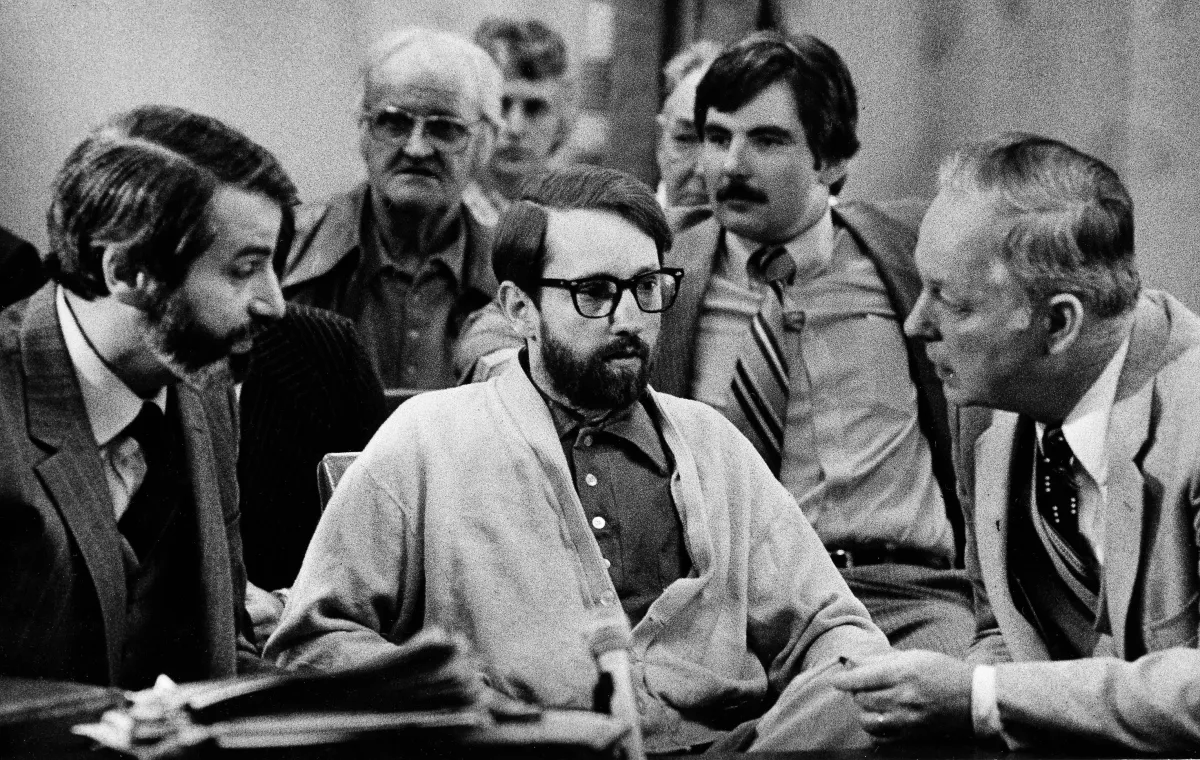
Hello, Tigers. Did you know that on March 30th, 1975, there was an Easter Sunday massacre? 41 year old James Urban Ruppert killed 11 members of his own “loving” family on 635 Minor Avenue in Hamilton, Ohio. Let’s dive into the truth behind this case.
James Urban Ruppert:

James was born March 29, 1934, and died June 4, 2022, due to natural causes. James, who was 40 and a bachelor, had trouble with alcohol along with being an unemployed draftsman. Neighbors painted him as an intelligent man who was meek, quiet, a loner, short (5’5), and slight. Since James was unemployed, he had money problems. His mother told him, “Get a job or get out.” From his early life, his mother, Charity Ruppert, called him a “mistake” because she didn’t want a son. She wanted a daughter. His father, Leonard, was a violent man who had little affection and a temper. He died in 1974 when James was 12 and his brother, Leonard, Jr. was 14. As the two brothers got older, James dropped out of college after two years while Leonard, Jr. got a degree in electrical engineering. To make it worse, Leonard, Jr. married one of James’s very few girlfriends and had 8 kids with her.
Massacre:
It’s Easter Sunday on March 30, 1975. Leonard Ruppert, Jr. brought his wife and eight children to his mother’s house. When they arrived, James was upstairs, sleeping. After the kids hunted for Easter eggs, they all came inside and went to the living room. James had woken up around 4:00; loaded his .357 Magnum, two .22 caliber, and a rifle; and went downstairs. He entered the kitchen, shot and killed Leonard, Jr.; Leonard’s wife, Alma; and Charity, their mother. James’s nephew, David, and his nieces, Teresa and Carol, were also in the kitchen. James shot them, too, killing them. James rushed to the living room where he killed his niece, Ann, and then his four nephews, Leonard III, Michael, Thomas, and John. He shot each of his family members with a disabling shot then finished them off with a shot to the head or heart. This massacre took less than 5 minutes. James reportedly sat in the house for three hours before calling the police. When the police arrived, he was waiting for them at the front door. Police described the scene as a “slaughterhouse.” There was so much blood that it went through the floorboards into the basement. To this day, you could still see the stains in the wood.

Trial:
James was arrested and was charged with 11 counts of aggravated homicide. He was very uncooperative, and he didn’t want to answer any of the officers’ questions. Prosecutors believed James planned to plead mentally insane and then when he was “cured” and released, he would inherit $300,000. The original trial was in Hamilton. A three-judge panel found James guilty of 11 counts of murder and sentenced him to life in prison. In June 1975, in Findlay, Ohio, a mistrial was declared, and a second trial was scheduled. Prosecutors offered new evidence about James going target shooting as a way of “solving his problems”. In July, he got a new sentence of 11 consecutive life sentences in prison.

In 1982, James appealed and a new trial was granted. Defense attorney Hugh D. Holbrock said his client was insane. The attorney hired expert psychiatrists from all over the country. On July 23, 1982, another three-judge panel found James guilty of two counts of first degree murder, his mother and his brother, but found him not guilty of the other nine counts because of insanity. James received one life sentence for each guilty count. Between 1972 and 1976 in the United States, the death penalty had been suspended under the U.S. Supreme Court decision. James couldn’t be sentenced to death for his horrific crimes. James was in the Allen Oakwood Correctional Institution in Lima, Ohio. He was granted his first parole hearing in 1995 but was denied. His latest attempt at parole was in April 2015, but he was denied then as well.
What happened to the house?
After the 11 victims were buried in the Memorial Gardens in Cincinnati, a year later the house was sold at an auction. New carpets were placed over the bloody ones. (They were unable to tear off the bloody ones.) A family rented out the house, having no idea of the horrific events that took place there previously. They moved out of the house after a short time, however. They reported that there were voices, strange noises, door slamming, footsteps coming down the stairs, and lights turning on and off. They weren’t the last family that had moved out quickly. A handful of other families moved in and all of them reported unexplained sounds and voices. Can somebody get Ghost Adventures over there? The house was left abandoned for several years. The last family that was there reported nothing: no sounds, voices, or footsteps were coming down the stairs this time. I guess that the family of 11 has finally rested and can now be at peace.
Victims:

Conclusion:
I feel like more people should be aware of this massacre to show how you can shape a person and that a person can do horrible things to you and to others, especially if they are mistreated. Thank you for reading my article.
Work Cited:
Gail, & Jones, J. (2025b, March 30).James Ruppert: The Easter Sunday massacre. The Dead History.https://thedeadhistory.com/2025/03/30/james-ruppert-family-massacre/
Bovsun, M. (2022, April 16). Justice story: Easter Sunday massacre wipes out entire family. New York Daily News. https://www.nydailynews.com/2022/04/16/justice-story-easter-sunday-massacre-wipes-out-entire-family/
A motive is sought in slaying of 11 in a family in Ohio (published 1975). (n.d.). https://www.nytimes.com/1975/04/01/archives/a-motive-is-sought-in-slaying-of-11-in-a-family-in-ohio.html
The Easter Sunday massacre. American Hauntings. (n.d.). https://www.americanhauntingsink.com/easter